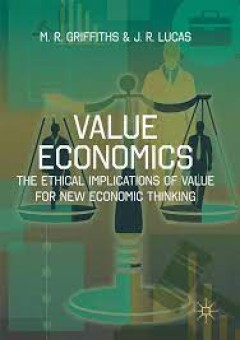Filter by

The Changing Economic Geography of Globalization
The process of globalization has had profound, often destabilizing, effects on space, at all levels (i.e. local, regional, national, international). This revealing book analyzes, both theoretically and empirically, the effects of globalization over space. It considers, through a dialogue among different paradigms, the ways in which space has become more important in the global economy. Globa…
- Edition
- 1st Edition
- ISBN/ISSN
- 9780203000403
- Collation
- -
- Series Title
- -
- Call Number
- -

Place Branding and Marketing from a Policy Perspective
As part of an emerging literature on place branding, this book fills the important gap between practice-oriented literature—which lacks in-depth and critical analysis—and technical academic literature—which tends to miss down-to-earth practitioners' concerns and to overlook policy and political contexts. Providing frameworks and knowledge on how to practice place branding effectively, thi…
- Edition
- 1st Edition
- ISBN/ISSN
- 9781003286189
- Collation
- -
- Series Title
- -
- Call Number
- -

Public sector economics and the need for reforms
Theoretically and empirically informed studies on the role and efficiency of the public sector, public wage and employment policy, privatization, tax policy, and fiscal sustainability.OCLC-licensed vendor bibliographic record.
- Edition
- -
- ISBN/ISSN
- 9780262332361
- Collation
- 1 online resource.
- Series Title
- -
- Call Number
- -

Green Investing the Case of India
This book seeks to answer the essential question of the investment-worthiness of green instruments. It is evident that investing in green and energy-efficient firms will be the most profitable choice for wise investors in the years to come. The reconciliation of the social choice for green technology and investors’ choice for gray technology will be automatically achieved once green firms bec…
- Edition
- -
- ISBN/ISSN
- 978-81-322-2025-1
- Collation
- IX, 102
- Series Title
- -
- Call Number
- 330 CHA g

Sustainability of public debt
This collection is an analysis of the theoretical foundations of public debt sustainability concepts and their application to the empirical study of actual budgetary policies. The contributors to this volume consider whether the development of public debt in the United States and six EU countries is sustainable.OCLC-licensed vendor bibliographic record.
- Edition
- -
- ISBN/ISSN
- 9780262280495
- Collation
- 1 online resource (vi, 271 pages) :illustrations.
- Series Title
- -
- Call Number
- -

Public finance and public policy in the new century
Essays on the theory and practice of public finance and policy.The sixteen essays in this book were written to celebrate the ninetieth birthday of Richard Musgrave and to commemorate the tenth anniversary of CES, the Center for Economic Studies at the University of Munich. Musgrave is considered to be a founding father of modern public economics. He belongs to the intellectual tradition that vi…
- Edition
- -
- ISBN/ISSN
- 9780262270502
- Collation
- 1 online resource (xxx, 535 pages) :illustrations.
- Series Title
- -
- Call Number
- -

The right way to hire financial help :a complete guide to choosing and managi…
Title from title screen.Detailed, practical advice on hiring financial advisers.OCLC-licensed vendor bibliographic record.
- Edition
- [2nd ed.].
- ISBN/ISSN
- 9780262287845
- Collation
- 1 online resource
- Series Title
- -
- Call Number
- -

Value Economics the Ethical Implications of Value for New Economic Thinking
The last financial crisis revealed a gap between business practice and ethics. In Value Economics, Griffiths and Lucas examine some of the reasons for this ethical gap and discuss the resulting loss of confidence in the financial system. One of the reasons has been hazy or inadequate thinking about how we value economic enterprises. With the close link between the creation of value and business…
- Edition
- -
- ISBN/ISSN
- 978-1-137-54187-1
- Collation
- -
- Series Title
- -
- Call Number
- -

Learning to Industrialize from Given Growth to Policy-aided Value Creation
This book proposes a new, pragmatic way of approaching economic development which features policy learning based on a comparison of international best policy practices. While the important role of government in promoting private sector development is being recognized, policy discussion often remains general without details as to what exactly to do and how to avoid common pitfalls. This book fil…
- Edition
- -
- ISBN/ISSN
- 9780203085530
- Collation
- -
- Series Title
- -
- Call Number
- -

Kapitalbeteiligungsgesellschaften und ihre Portfoliounternehmen
Die Finanzierung mit Venture Capital oder Private Equity gewinnt in Deutschland zunehmend an Bedeutung. Ein Spezifikum einer solchen Finanzierung ist es, dass für den begrenzten Beteiligungszeitraum nicht nur Kapital bereitgestellt wird, sondern der Kapitalgeber auch eine mehr oder minder intensive Zusammenarbeit mit dem Management des finanzierten Unternehmens anstrebt. Frank Pankotsch unt…
- Edition
- 1
- ISBN/ISSN
- 978-3-322-82127-0
- Collation
- Manajemen
- Series Title
- -
- Call Number
- 658.8
 Computer Science, Information & General Works
Computer Science, Information & General Works  Philosophy & Psychology
Philosophy & Psychology  Religion
Religion  Social Sciences
Social Sciences  Language
Language  Pure Science
Pure Science  Applied Sciences
Applied Sciences  Art & Recreation
Art & Recreation  Literature
Literature  History & Geography
History & Geography